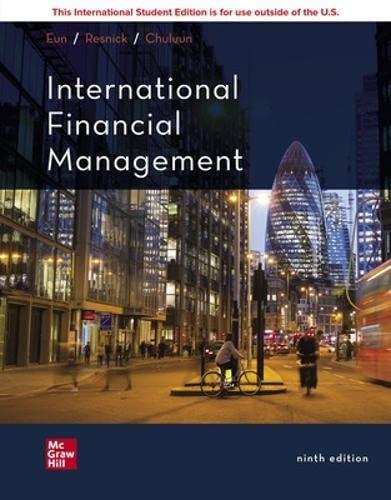1. Dorchester Ltd. is an old-line confectioner specializing in high-quality chocolates. Through its facilities in the United...
Question:
1. Dorchester Ltd. is an old-line confectioner specializing in high-quality chocolates. Through its facilities in the United Kingdom, Dorchester manufactures candies that it sells throughout Western Europe and North America (United States and Canada). With its current manufacturing facilities, Dorchester has been unable to supply the U.S. market with more than 225,000 pounds of candy per year. This supply has allowed its sales affiliate, located in Boston, to be able to penetrate the U.S. market no farther west than St. Louis and only as far south as Atlanta. Dorchester believes that a separate manufacturing facility located in the United States would allow it to supply the entire U.S. market and Canada (which presently accounts for 65,000 pounds per year). Dorchester currently estimates initial demand in the North American market at 390,000 pounds, with growth at a 5 percent annual rate. A separate manufacturing facility would, obviously, free up the amount currently shipped to the United States and Canada. But Dorchester believes that this is only a short-run problem. They believe the economic development taking place in Eastern Europe will allow it to sell there the full amount presently shipped to North America within a period of five years.
Dorchester presently realizes £3.00 per pound on its North American exports.
Once the U.S. manufacturing facility is operating, Dorchester expects that it will be able to initially price its product at $7.70 per pound. This price would represent an operating profit of $4.40 per pound. Both sales price and operating costs are expected to keep track with the U.S. price level; U.S.
inflation is forecast at a rate of 3 percent for the next several years. In the U.K., long-run inflation is expected to be in the 4 to 5 percent range, depending on which economic service one follows. The current spot exchange rate is
$1.50/£1.00. Dorchester explicitly believes in PPP as the best means to forecast future exchange rates.
The manufacturing facility is expected to cost $7,000,000. Dorchester plans to finance this amount by a combination of equity capital and debt. The plant will increase Dorchester’s borrowing capacity by £2,000,000, and it plans to borrow only that amount. The local community in which Dorchester has decided to build will provide $1,500,000 of debt financing for a period of seven years at 7.75 percent. The principal is to be repaid in equal installments over the life of the loan. At this point, Dorchester is uncertain whether to raise the remaining debt it desires through a domestic bond issue or a Eurodollar bond issue. It believes it can borrow pounds sterling at 10.75 percent per annum and dollars at 9.5 percent. Dorchester estimates its all-equity cost of capital to be 15 percent.
The U.S. Internal Revenue Service will allow Dorchester to depreciate the new facility over a seven-year period. After that time the confectionery equipment, which accounts for the bulk of the investment, is expected to have substantial market value.
Dorchester does not expect to receive any special tax concessions. Further, because the corporate tax rates in the two countries are the same—35 percent in the U.K. and in the United States—transfer pricing strategies are ruled out.
Should Dorchester build the new manufacturing plant in the United States?
Step by Step Answer:

ISE International Financial Management
ISBN: 9781260575316
9th International Edition
Authors: Cheol Eun, Bruce Resnick, Tuugi Chuluun





